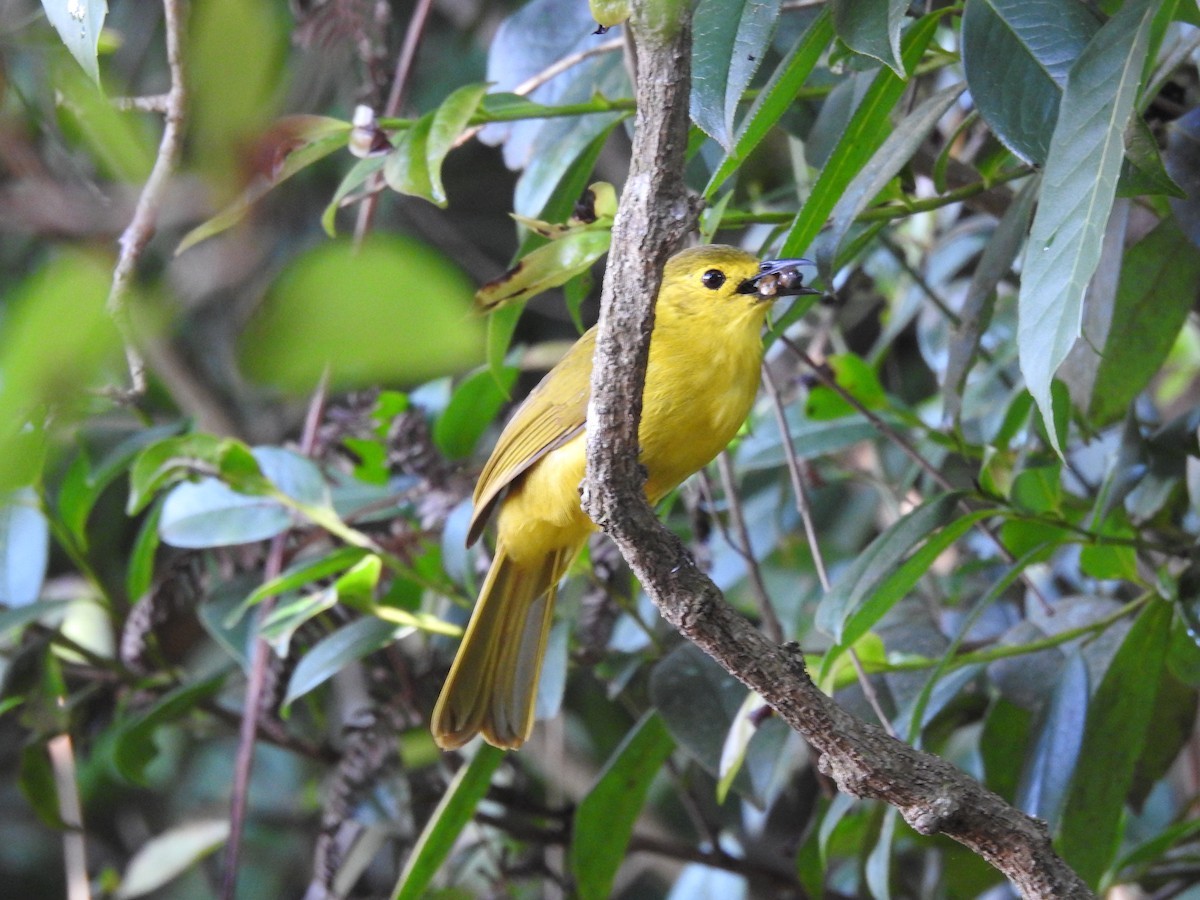Yellow-browed Bulbul
A species of Yellow-browed Bulbul Scientific name : Acritillas indica Genus : Yellow-browed Bulbul
Yellow-browed Bulbul, A species of Yellow-browed Bulbul
Botanical name: Acritillas indica
Genus: Yellow-browed Bulbul
Content
Description General Info
 Photo By Ashwin Viswanathan
Photo By Ashwin Viswanathan Description
This bulbul is about 20 cm (7.9 in) long, lacks a crest and has the upperparts olive green with a prominent yellow brow and goggle with the underparts being all yellow. The sexes do not differ in plumage. The bill is black and the iris is reddish brown. The population in the northern Western Ghats (ssp. icterica) is paler yellow than the populations further south (ssp. indica). A somewhat disjunct population is found in the Eastern Ghats. Southwestern Sri Lankan populations (ssp. gugliemi) are greener while the northern populations are included in the nominate subspecies. The calls include a whistle like call and sharp pick-wick notes. 
Size
20 cm
Nest Placement
Cavity
Feeding Habits
Yellow-browed Bulbul predominantly eats fruits, seeds, and a range of invertebrates, including spiders and winged insects. Feeds on flowers and buds, particularly from Apama siliquosa and Cullenia exarillata. Known for retiring behavior, pairs or flocks feed in lower to middle forest strata, sometimes forming mixed-species flock nuclei. Captures insects via short flights or hovering, similarly plucks fruits and seeds.
Habitat
Yellow-browed Bulbul is typically found in humid environments, favoring habitats such as sholas, edges of evergreen forests, secondary forests, and shade coffee plantations. They also inhabit undergrowth and may occasionally be observed in gardens. These birds are adaptable to some extent, as they can tolerate degraded habitats, particularly those with small patches of low forest along streams in predominantly cultivated areas.
Dite type
Herbivorous
General Info
Feeding Habits
Bird food type
Behavior
Yellow-browed bulbuls are found in pairs or small groups and call loudly. They feed mainly on berries and insects. The breeding season is during the dry spell before the monsoons, mainly January to May. The nest is a cup built in a low fork covered with moss and cobwebs on the outside, giving the appearance of a large white-eye nest, and lined with fine root fibres. The typical clutch size in India is three eggs and in Sri Lanka is two. A study of 153 nests in Silent Valley National Park of India found 92% of nests had two eggs. Peak breeding in the Silent Valley National Park of Kerala was found in January and February. About a week is taken for building the nest and the eggs are incubated for about 13 days. The eggs are pale pink or white with reddish brown speckling. The eggs hatch synchronously and the nestlings fledge after about 13 days. Nestlings are fed with caterpillars, soft insects and berries. 
Distribution Area
The yellow-browed bulbul has been considered as the wet-zone counterpart of the dry-zone white-browed bulbul. It is found mainly below the forest canopy of the hill forests and plantations in the Western Ghats and Sri Lanka. They also occur in parts of the Eastern Ghats including the Kolli hills, Nallamalas and parts of Tirupathi and Mamandur regions in Andhra Pradesh. 

 Photo By Ashwin Viswanathan
Photo By Ashwin Viswanathan Scientific Classification
Phylum
Chordates Class
Birds Order
Perching birds Family
Bulbuls Genus
Yellow-browed Bulbul Species
Yellow-browed Bulbul